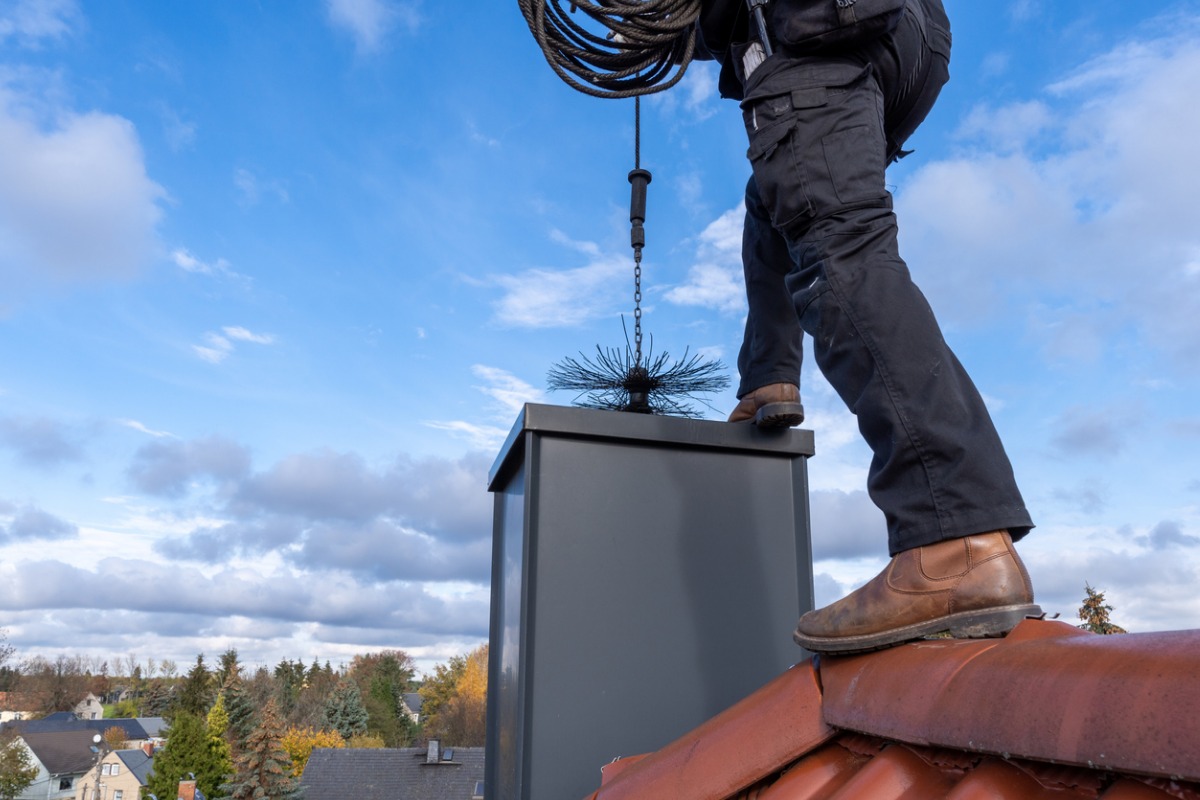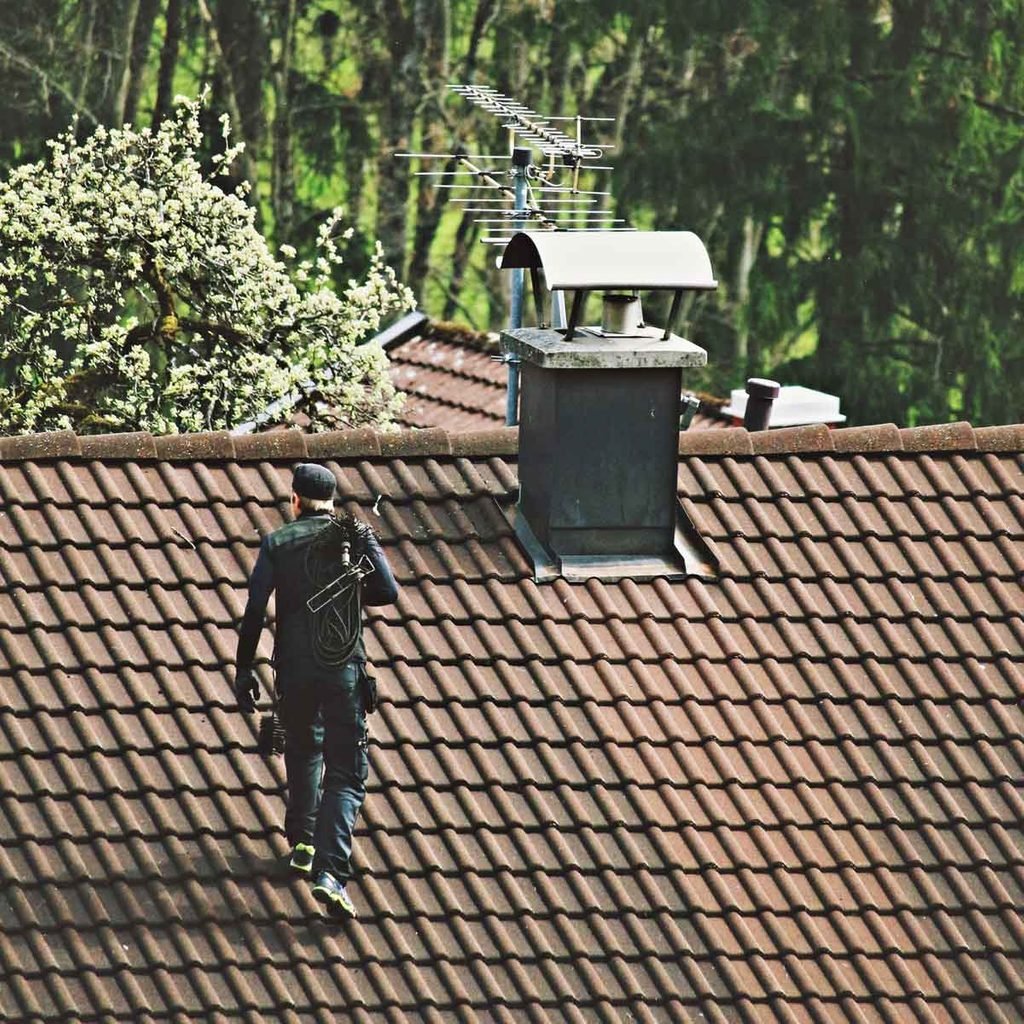The Complete Chimney Sweep San Jose Checklist for Year-round Safety
The Complete Chimney Sweep San Jose Checklist for Year-round Safety
Blog Article
The Ultimate Chimney Cleaning List for Homeowners
Making certain the security and efficiency of your smokeshaft is a crucial duty for house owners that depend on their fireplace or timber cooktop for warmth throughout the cooler months. A properly maintained smokeshaft not just enhances the overall functioning of your heating unit but also reduces the danger of possible risks such as fires and carbon monoxide gas leakages. With a thorough list in hand, house owners can methodically deal with key upkeep jobs that are necessary for a tidy and risk-free smokeshaft. From evaluating the chimney structure to eliminating creosote accumulation, each action plays a crucial function in safeguarding your home and enjoyed ones.
Smokeshaft Assessment and Analysis
When carrying out a smokeshaft assessment and evaluation, it is important to thoroughly analyze the exterior and interior components for indications of damage or build-up. The inside of the smokeshaft ought to be looked for any blockages, such as bird nests or excess residue, which can posture a fire threat. Examining the flue for creosote buildup is crucial as this highly combustible material can cause a smokeshaft and spark fire. Additionally, analyzing the condition of the chimney liner is important to ensure proper air flow and safety and security.

Exterior Maintenance and Fixes
Inspecting the exterior of the chimney for any architectural concerns, such as cracks, loose bricks, or indications of water damages, is crucial in guaranteeing the general security and long life of the smokeshaft. Over time, exposure to varying weather can trigger damage on the smokeshaft's outside, possibly leading to even more significant problems if not dealt with quickly. Consistently examining for any cracks in the mortar or blocks can aid protect against water from seeping in and creating damages to the smokeshaft framework. Loosened bricks ought to be repositioned and secured to maintain the honesty of the smokeshaft. In addition, any kind of indications of water damage, such as discoloration or mold growth, should be investigated and fixed to protect against additional degeneration. Addressing these outside upkeep problems in a timely manner can prolong the life of your smokeshaft and protect against pricey repair services down the line. Aggressive repair services and routine evaluations are key to maintaining your chimney in optimal problem.
Cleaning the Chimney Flue and Damper
To ensure appropriate operating and security of your smokeshaft, regular cleaning of the smokeshaft flue and damper is important. The smokeshaft flue is the passage that enables smoke and gases to leave your home, while the damper is a movable plate that controls air flow. Begin by evaluating the flue for any obstructions such as bird nests, particles, or creosote buildup. Use a flashlight to inspect for any indications of damages or blockages. Next, meticulously remove any kind of debris utilizing a smokeshaft brush or vacuum cleaner designed for this function. Make certain that the damper opens up and closes smoothly, as an appropriately operating damper helps regulate air flow and stops drafts when the smokeshaft is not being used. Additionally, think about setting up a smokeshaft cap to avoid particles and pets from getting in the flue. Regular maintenance of the chimney flue and damper not only improves the efficiency of your smokeshaft however additionally lowers the risk of chimney fires and carbon monoxide gas buildup in your home.
Eliminating Creosote Buildup Securely
Just how can house owners safely remove creosote build-up from their smokeshaft to preserve its optimal performance and security? Creosote, a byproduct of melting timber, can build up in chimneys with time, presenting a fire risk otherwise effectively handled. To safely get rid of creosote accumulation, start by making certain the chimney is awesome and there are no sticking around ashes. Use a flashlight to evaluate the interior of the chimney for creosote deposits.
There are various approaches to remove creosote, internet relying on the buildup's intensity. For light creosote buildup, utilizing a smokeshaft brush or a homemade creosote remover made from equivalent parts water and vinegar can be efficient (Chimney Sweep San Jose). For thicker down payments, professional chimney cleaning company may be needed
It's essential to use safety gear such as gloves, goggles, and a mask when managing creosote to protect against skin irritability or inhalation. Furthermore, appropriate air flow while cleaning the smokeshaft is important to prevent breathing in unsafe fumes. Regular chimney assessments and cleansings can aid prevent creosote buildup, guaranteeing the security and effectiveness of your smokeshaft.
Fire Safety And Security Preventative Measures for Chimney Owners
Guaranteeing correct fire safety and security preventative measures remain in area is paramount for chimney owners to avoid prospective risks and preserve a protected home atmosphere. Routine chimney evaluations by certified experts are important to determine any type of clogs, creosote accumulation, or structural issues that could pose a fire risk. Installing a navigate here smokeshaft cap can stop particles, animals, and rainwater from getting in the smokeshaft and triggering obstructions or damage. It is vital to use seasoned woods for burning, as they create less creosote compared to environment-friendly or softwoods. In addition, smokeshaft owners should have a trigger arrestor or smokeshaft spark arrester installed to protect against triggers from getting away and potentially stiring up neighboring combustibles. Correctly taking care of ashes in a steel container with a tight-fitting cover, located away from your home, is additionally crucial to avoid accidental fires. Having working smoke detectors and carbon monoxide alarm systems in the house can give early cautions in case of a smokeshaft fire or carbon monoxide leakage. By executing these fire safety preventative measures, smokeshaft owners can appreciate a warm and comfy home environment while decreasing the risk of fire dangers.

Verdict
Finally, regular chimney maintenance is essential for making certain the safety and performance of your fireplace. By adhering to the supreme chimney cleaning list described in this article, house owners can evaluate, tidy, and fix their smokeshaft efficiently. Proper upkeep not just decreases the risk of smokeshaft fires but also lengthens the life expectancy find out this here of the smokeshaft system. Remember to prioritize security and schedule routine chimney inspections to maintain your home cozy and safe.
Examining the chimney cap and crown for any kind of damage is essential to avoid water from permeating right into the smokeshaft and creating additional deterioration.
Routine maintenance of the chimney flue and damper not just boosts the efficiency of your smokeshaft yet also minimizes the threat of smokeshaft fires and carbon monoxide buildup in your home.
Routine smokeshaft inspections and cleanings can assist protect against creosote accumulation, ensuring the safety and effectiveness of your smokeshaft. (Chimney Sweep San Jose)
Mounting a smokeshaft cap can prevent debris, animals, and rainwater from going into the smokeshaft and creating clogs or damages. Proper maintenance not only decreases the danger of smokeshaft fires yet additionally lengthens the lifespan of the chimney system.
Report this page